Top AI SDR Tools in 2025 for Outbound Sales Success

AI SDRs have fundamentally shifted how sales teams approach prospecting and lead qualification. These autonomous digital workers leverage artificial intelligence, machine learning, and natural language processing to execute complete outreach sequences from initial prospect research to booking qualified meetings.
The transformation is measurable. According to Salesforce’s State of Sales Report, sales teams using AI-powered automation experience up to a 30% increase in lead conversion rates and respond to prospects 60% faster compared to manual workflows. These AI-driven efficiencies allow teams to scale outreach across thousands of hyper-personalized interactions, without expanding headcount, while human reps stay focused on closing deals.
11x.ai leads this transformation with Alice, an AI agent that runs complete LinkedIn outreach campaigns on autopilot. Alice identifies your ideal customer profile, researches prospects across verified data sources, and sends personalized connection requests and follow‑ups that feel human. Unlike basic automation tools, Alice learns from every interaction, adapting her messaging in real time to maximize engagement and book qualified meetings at scale.
Here’s how the best AI LinkedIn outreach tools are helping sales teams book more meetings with high‑intent buyers in 2025.
What Are AI SDRs?
An AI SDR (Sales Development Representative) is an autonomous sales agent that uses artificial intelligence to run outbound and inbound prospecting end‑to‑end. It analyzes CRM and market data to find high‑intent leads, writes and sends personalized outreach across channels like email and LinkedIn, and manages follow‑ups automatically.
The core benefits that make AI SDRs indispensable for modern sales teams include:
- 24/7 automation across time zones and markets, ensuring no lead goes unengaged
- Improved deliverability through intelligent timing and sender reputation management
- Reduced dependency on human SDR headcount while scaling outreach volume
- Enhanced pipeline visibility with real-time reporting and forecasting capabilities
- Intelligent lead qualification using buying signals and behavioral data
Modern AI SDRs research prospects, identify pain points, detect buying signals, and adapt their messaging based on engagement patterns, functioning as true digital sales development representatives rather than basic automation tools.
The 30% Rule of AI SDR Automation
The “30% rule” refers to the share of tasks, from prospect research and email writing to CRM updates and meeting scheduling, that can be automated using current-generation AI SDR tools. This guideline helps teams benchmark what today’s automation can handle reliably versus tasks that still need human intervention, such as nuanced discovery or complex negotiation.
AI’s efficiency comes from automating routine, repetitive work that slows down sales development. When properly deployed, automation can handle lead enrichment, timed follow‑ups, and pipeline updating across thousands of contacts simultaneously, freeing reps to focus on account strategy and closing deals.
While the 30% threshold describes today’s industry average, newer platforms like 11x.ai demonstrate how autonomous agents are extending beyond that boundary, moving from assistive automation to fully independent outreach and qualification.
Tool Comparison Overview
11x.ai
- Core Strength: Fully autonomous digital workers
- Best Fit: Enterprise GTM teams
- Pricing Model: Custom pricing
Apollo.io
- Core Strength: Extensive B2B database
- Best Fit: SMB outbound programs
- Pricing Model: Tiered subscription
Outreach.io
- Core Strength: Complete sales execution
- Best Fit: Mid-market RevOps
- Pricing Model: Per-user licensing
Salesforge.ai
- Core Strength: AI email optimization
- Best Fit: Email-focused campaigns
- Pricing Model: Usage-based
Persana AI
- Core Strength: Signal-based prospecting
- Best Fit: Data-driven qualification
- Pricing Model: Credit system
Clay
- Core Strength: Customizable workflows
- Best Fit: Flexible automation
- Pricing Model: Subscription tiers
Drift
- Core Strength: Inbound conversation AI
- Best Fit: Real-time lead engagement
- Pricing Model: Feature-based pricing
Conversica
- Core Strength: Multi-channel nurturing
- Best Fit: Extended sales cycles
- Pricing Model: Custom pricing
Lavender.ai
- Core Strength: Email writing assistance
- Best Fit: Message optimization
- Pricing Model: Subscription model
Seamless.ai
- Core Strength: Real-time data verification
- Best Fit: Contact enrichment
- Pricing Model: Credit-based
Exceed.ai
- Core Strength: Conversational qualification
- Best Fit: Balanced automation
- Pricing Model: Tiered pricing
Gong.io
- Core Strength: Conversation intelligence
- Best Fit: Performance analytics
- Pricing Model: Per-user model
Top 12 AI SDR Tools
1. 11x.ai Digital Workers That Automate Outbound and Inbound Sales
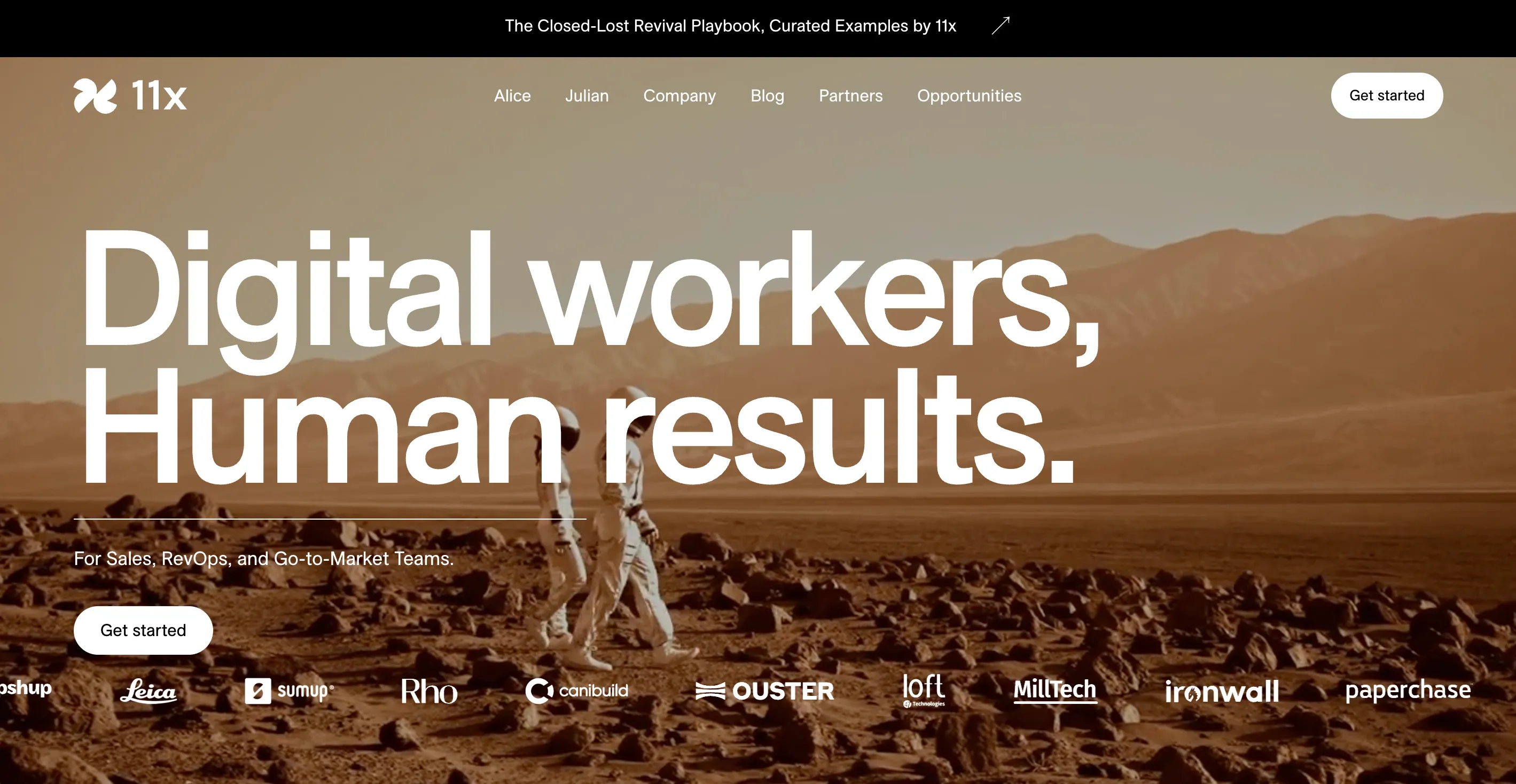
11x.ai builds fully autonomous AI SDRs that operate as digital team members. Alice, the AI SDR, runs outbound prospecting, while Julian, the AI phone agent, manages inbound qualification and follow‑ups. Together, they execute multi‑channel outreach, handle CRM updates, and book meetings automatically.
Core Features:
- 400 million+ B2B Contacts sourced from 21+ premium data providers, giving Alice unmatched visibility into active buying signals and decision-maker data
- Signal-based lead research and enrichment that identifies high‑intent prospects automatically and enriches CRM records in real time
- Hyper‑personalized outreach across email and LinkedIn, written and sequenced autonomously to match each prospect’s tone and industry context
- Deliverability infrastructure, including domain warm‑up, inbox rotation, and spam‑avoidance systems that maintain message placement and sender reputation above 99% inbox rate
- White‑glove onboarding that configures buyer personas, messaging tone, and ICP targeting within days, not weeks
- Forecast dashboards and performance analytics tracking every touchpoint and conversion metric to optimize pipeline growth
Pros: Enterprise‑grade security (SOC 2 Type II), scalable workflows, and adaptive learning that improves performance with every interaction.
Cons: Requires initial configuration for complex GTM processes.
Best Fit: Mid‑market to enterprise RevOps and sales teams seeking full‑cycle automation and measurable ROI.
Learn more about how 11x automates the entire sales cycle with its digital workforce: explore Alice, meet Julian, or hire digital workers from 11x today.
2. Apollo.io AI SDR Data Engine for Lead Generation
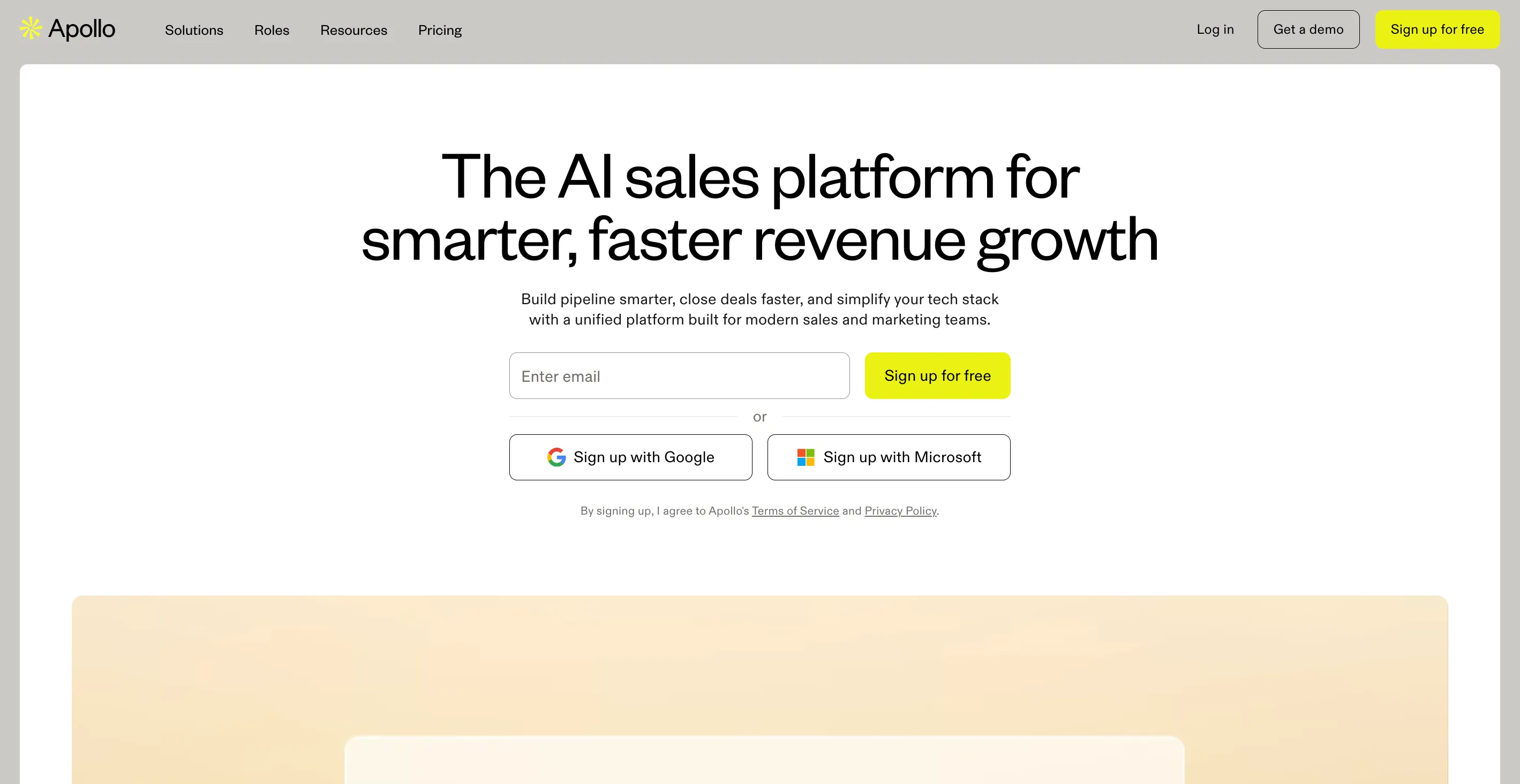
Apollo.io combines extensive B2B data resources with AI-powered automation to streamline prospecting workflows. With over 210 million contacts and 35 million companies in their database, the platform focuses on automation in list building, enrichment, and email sequencing.
Features: The platform offers AI-driven workflow automation, signal-based prospecting, and personalized outreach generation. Advanced filtering capabilities enable precise targeting based on job titles, company size, and buying intent signals.
Pros: Extensive data accuracy with regular updates ensures reliable contact information. User-friendly interface requires minimal technical expertise. Competitive pricing makes it accessible for growing teams.
Cons: Some users report data accuracy problems with outdated contact information. Customer service challenges and email deliverability issues affecting spam folder placement.
Best Fit: Startups and SMBs launching outbound sales programs who need robust data resources combined with basic automation capabilities.
3. Outreach.io AI Sales Representative for Follow-Ups and Cadence Optimization

Outreach.io serves as a comprehensive sales execution platform that integrates AI tools directly into seller workflows. The platform has evolved beyond simple automation to offer predictive analytics and complete sales assistance.
Features: Smart Deal Assist predicts deal closures with 81% accuracy, while Smart Email Assist creates personalized emails based on previous interactions. Conversation intelligence through Kaia provides real-time call transcription and sentiment analysis.
Pros: Complete tools covering the entire sales cycle from prospecting to forecasting. Advanced analytics provide detailed sales performance insights. Seamless CRM integration with Salesforce and other platforms.
Cons: Custom pricing can be expensive for smaller companies. Requires significant setup time and team training. Annual contracts with upfront payment requirements.
Best Fit: RevOps teams at mid-market to enterprise companies who need comprehensive sales execution platforms with advanced AI capabilities.
4. Salesforge.ai Generative AI Messaging Assistant for SDRs
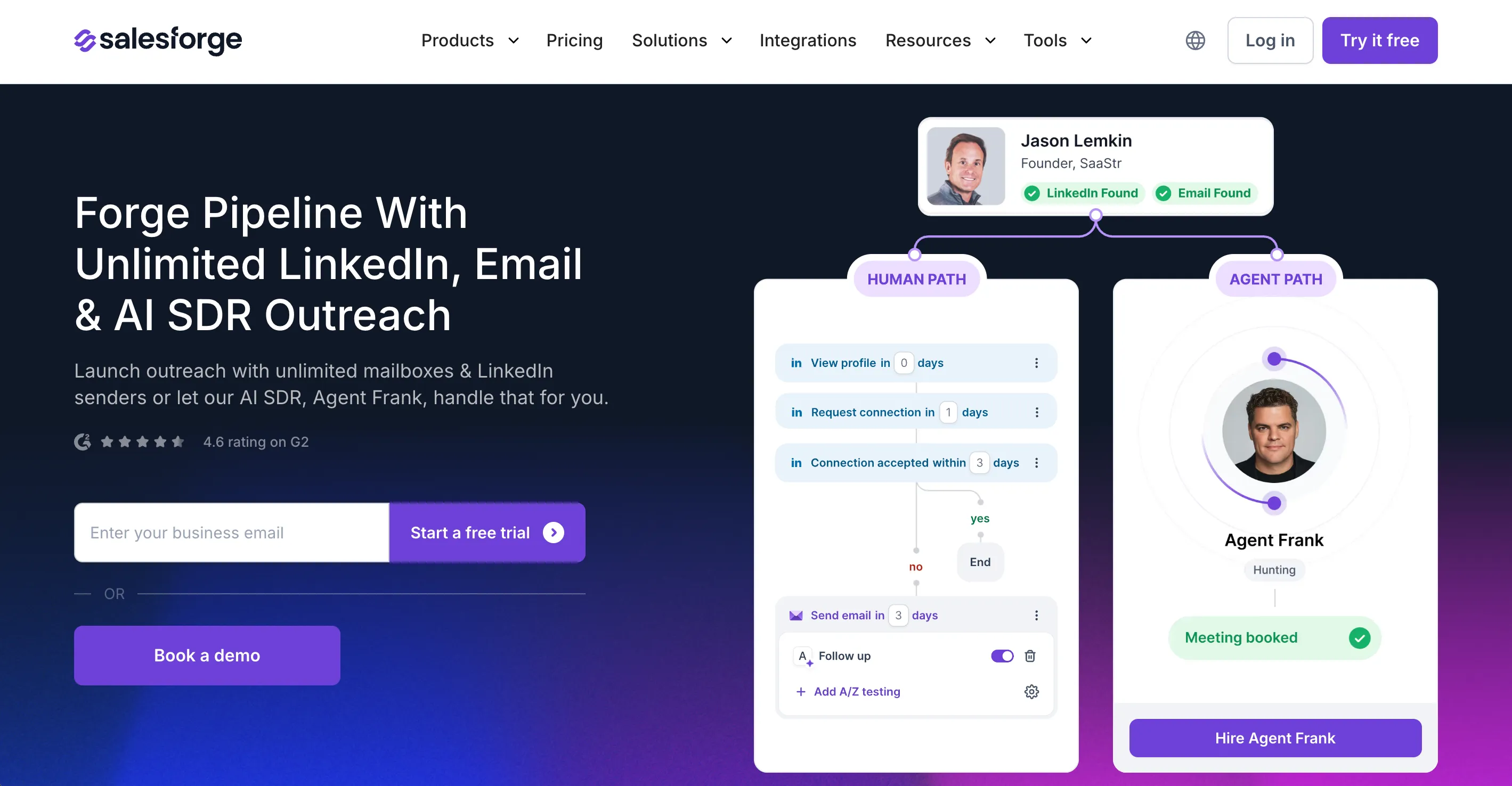
Salesforge.ai uses ChatGPT-powered technology to optimize email campaigns and template testing for maximum conversion timing. The platform specializes in generative AI messaging that adapts based on performance data.
Features: AI-powered email generation, A/B testing capabilities, and automated follow-up sequences designed to optimize response rates through machine learning insights.
Pros: Advanced personalization capabilities improve email engagement. Integrated testing features help optimize messaging performance. Focus on conversion optimization through AI-driven insights.
Cons: Limited to email-focused outreach without multi-channel capabilities. Smaller feature set compared to comprehensive AI SDR platforms.
Best Fit: Sales reps running AI email campaigns who want sophisticated personalization and A/B testing without the complexity of full sales automation platforms.
5. Persana AI Prospecting and AI Lead Qualification

Persana AI uses signal-based selling to pinpoint ideal customer profiles and tailor outreach based on real buying intent. The platform tracks 75+ buying intent indicators, including job changes, funding rounds, and keyword intent.
Features: Nia, their flagship AI agent, automates up to 90% of the sales development process. The platform combines access to over 1 billion contacts through 75+ data providers with sophisticated AI technology.
Pros: Higher match rate for contact information compared to competing platforms. Unlimited team members are included on all paid plans. Advanced signal detection capabilities.
Cons: Learning curve for new users. Focus primarily on small and medium businesses. Limited documented customer service information.
Best Fit: Sales teams focusing on middle-funnel qualification through predictive scoring who value data accuracy and unlimited user models.
6. Clay Customizable AI Enrichment and Research Workflow Tool

Clay specializes in CRM data enrichment and real-time segmentation through customizable automation workflows. The platform excels at data control and flexible automation processes.
Features: Advanced enrichment capabilities, customizable workflows, and intelligent sequence building that adapts messages based on prospect responses. Integration with popular CRMs and sales tools.
Pros: Flexible workflow customization options. Strong data enrichment capabilities. Integration with existing sales tech stacks.
Cons: As a newer platform, some advanced features found in established tools may be missing. AI message writing can be inconsistent.
Best Fit: RevOps teams that want data control and flexible automation workflows rather than fully autonomous AI SDR capabilities.
7. Drift Conversational AI for Inbound SDR Assistance
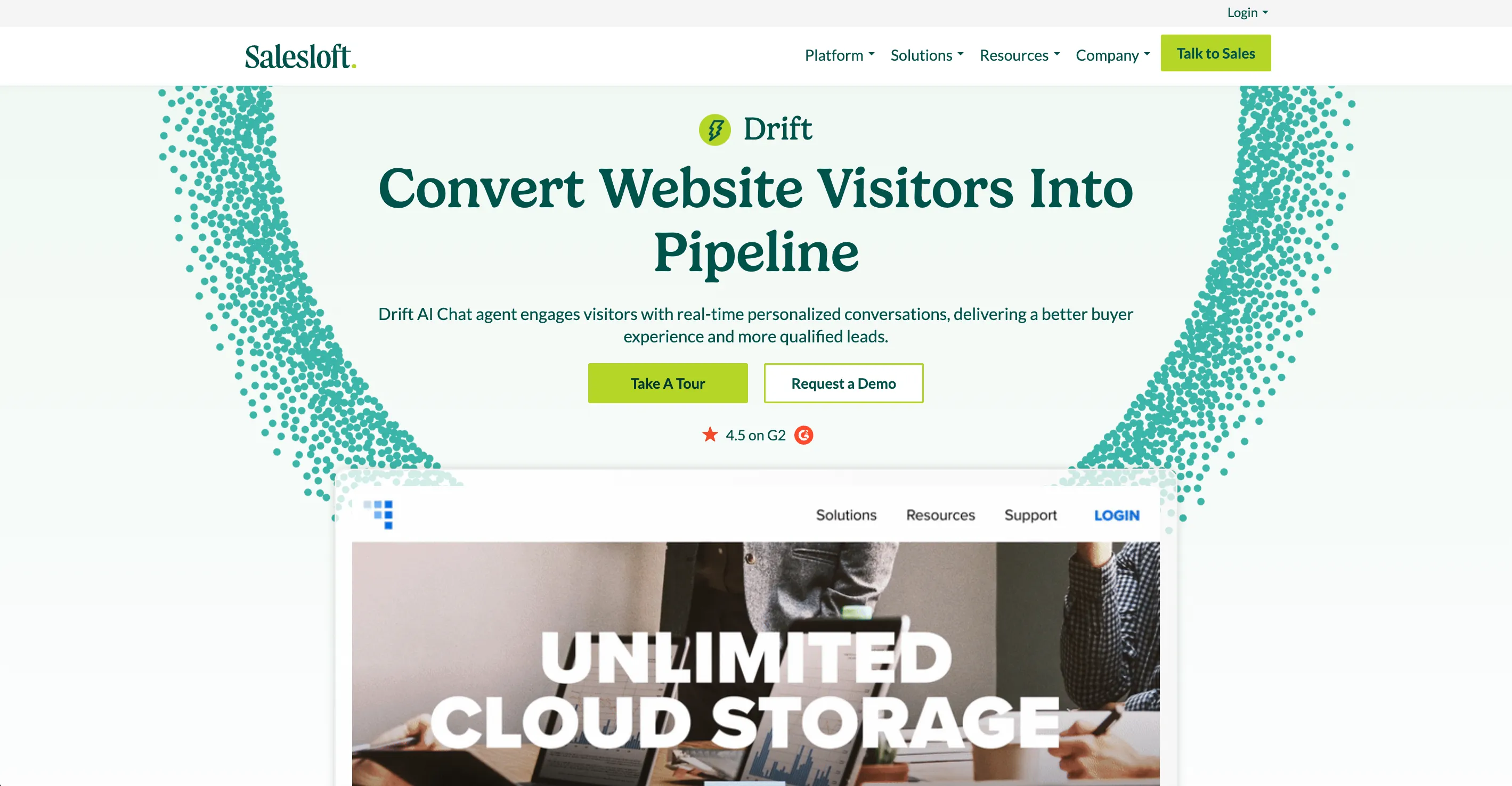
Drift uses conversational AI to engage inbound leads the moment they arrive, qualifying prospects and routing them to the right rep in real time. The platform focuses on conversational marketing and immediate lead engagement.
Features: Real-time chat automation, intelligent lead qualification, and seamless routing to appropriate sales team members based on prospect characteristics and intent.
Pros: Excellent inbound lead handling capabilities. Real-time engagement reduces response times. Strong integration with marketing automation platforms.
Cons: Limited outbound capabilities. Best used as a complement rather than a replacement for comprehensive AI SDR tools.
Best Fit: Companies with strong inbound lead flow who need immediate qualification and routing capabilities paired with outbound automation platforms.
8. Conversica Multichannel AI SDR Specializing in Lead Nurture
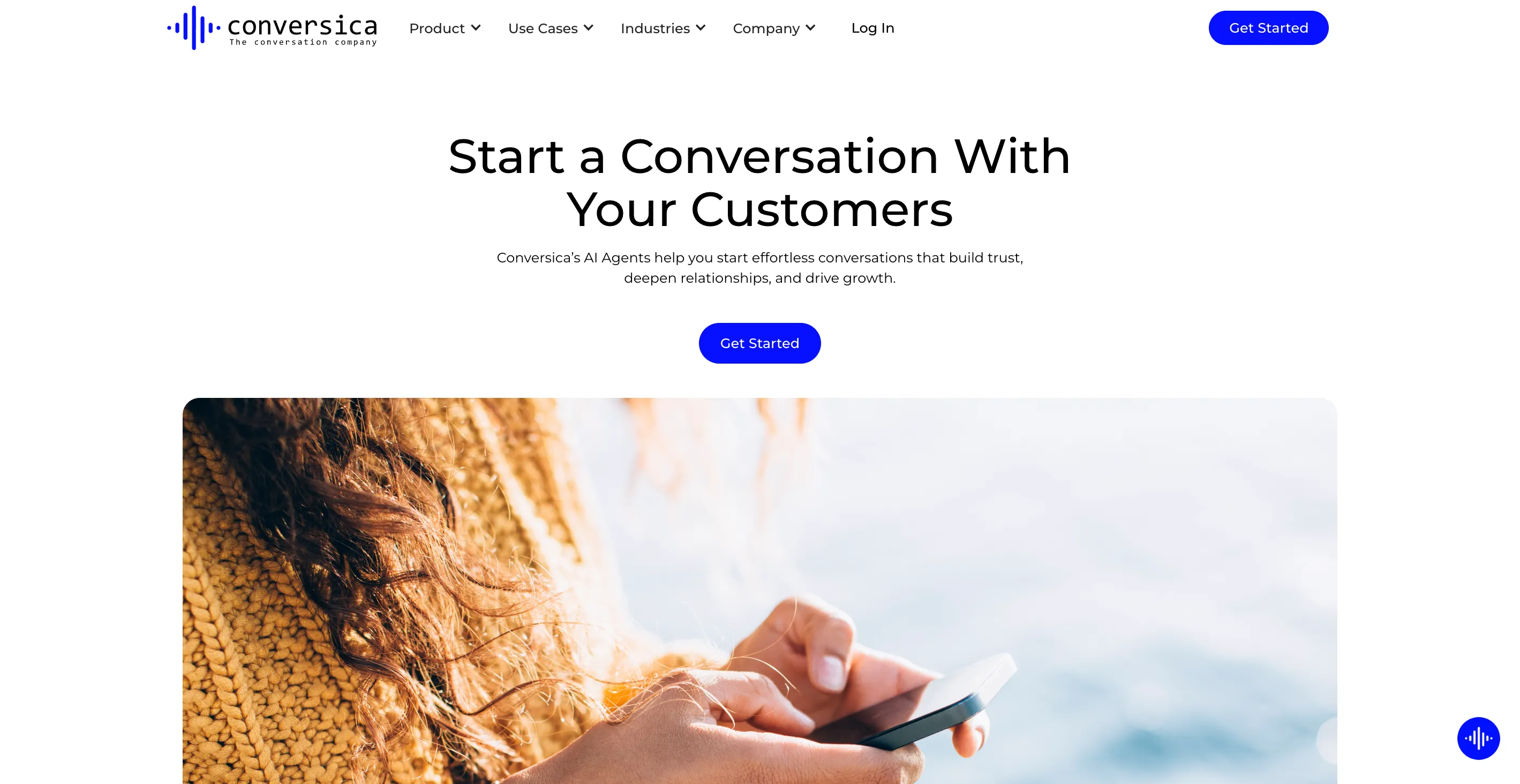
Conversica applies conversational AI to maintain continuous engagement with leads over email and SMS, nurturing relationships and prompting timely follow‑ups throughout the sales cycle.
Features: Multi-channel conversation management, intelligent follow-up sequences, and natural language processing for managing prospect interactions across email and SMS.
Pros: Strong lead nurturing capabilities. Multi-channel engagement options. Natural conversation flow management.
Cons: Less focused on initial prospecting and lead generation. Better suited as a nurturing tool rather than a complete SDR replacement.
Best Fit: Teams needing sophisticated lead nurturing and inbound to outbound follow-up transitions with multi-channel capabilities.
9. Lavender.ai AI Writing Assistant for Cold Email Optimization

Lavender.ai uses machine learning to analyze tone and message structure, helping sales reps write more natural emails that improve personalization, boost deliverability, and increase reply rates. The platform serves as an AI writing assistant rather than a complete SDR replacement.
Features: Email optimization through AI analysis, deliverability improvement tools, and response rate enhancement through machine learning insights into effective messaging.
Pros: Specialized focus on email optimization. Detailed analytics on message performance. Integrates well with existing workflows as an enhancement tool.
Cons: Limited to email writing assistance. Doesn't provide complete SDR automation or lead generation capabilities.
Best Fit: Sales teams wanting to enhance their existing email outreach with AI-powered writing assistance and optimization without full automation.
10. Seamless.ai AI SDR Data Discovery and Contact Accuracy
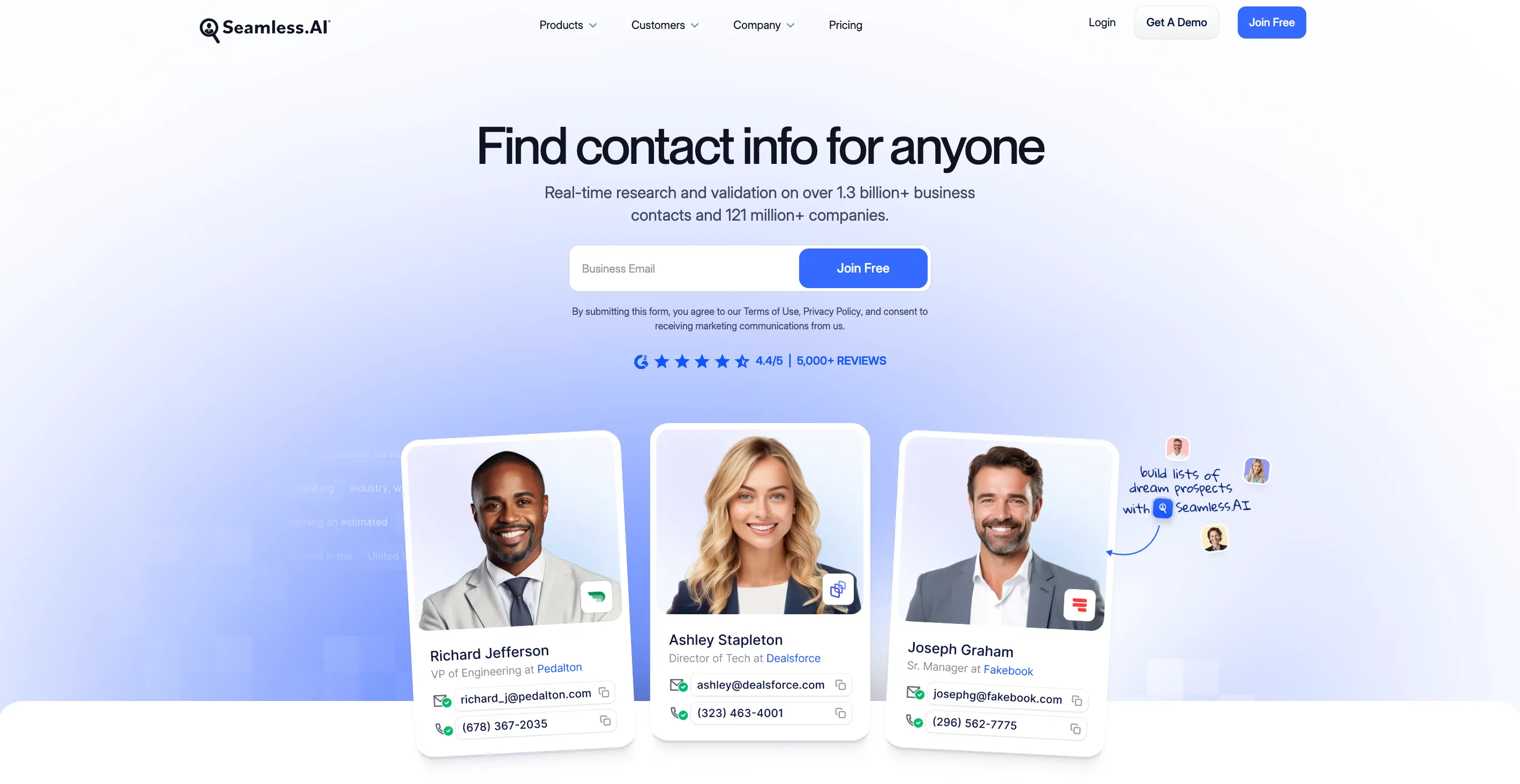
Seamless.ai operates as a real-time search engine for B2B sales leads, providing access to over 1.3 billion business contacts and 121 million companies. The platform focuses on data accuracy and enrichment.
Features: Real-time data verification, smart lead search and discovery, detailed contact enrichment, and Chrome extension for direct LinkedIn prospecting.
Pros: Immediate data updates provide current information. Extensive CRM integrations. Chrome extension simplifies lead finding from LinkedIn.
Cons: Users report data accuracy problems with outdated emails and phone numbers. Pricing lacks transparency, with many features requiring add-on purchases.
Best Fit: Teams prioritizing data accuracy and CRM enrichment who need extensive contact databases with real-time verification capabilities.
11. Exceed.ai by Genesys Conversational AI SDR Platform for Qualification
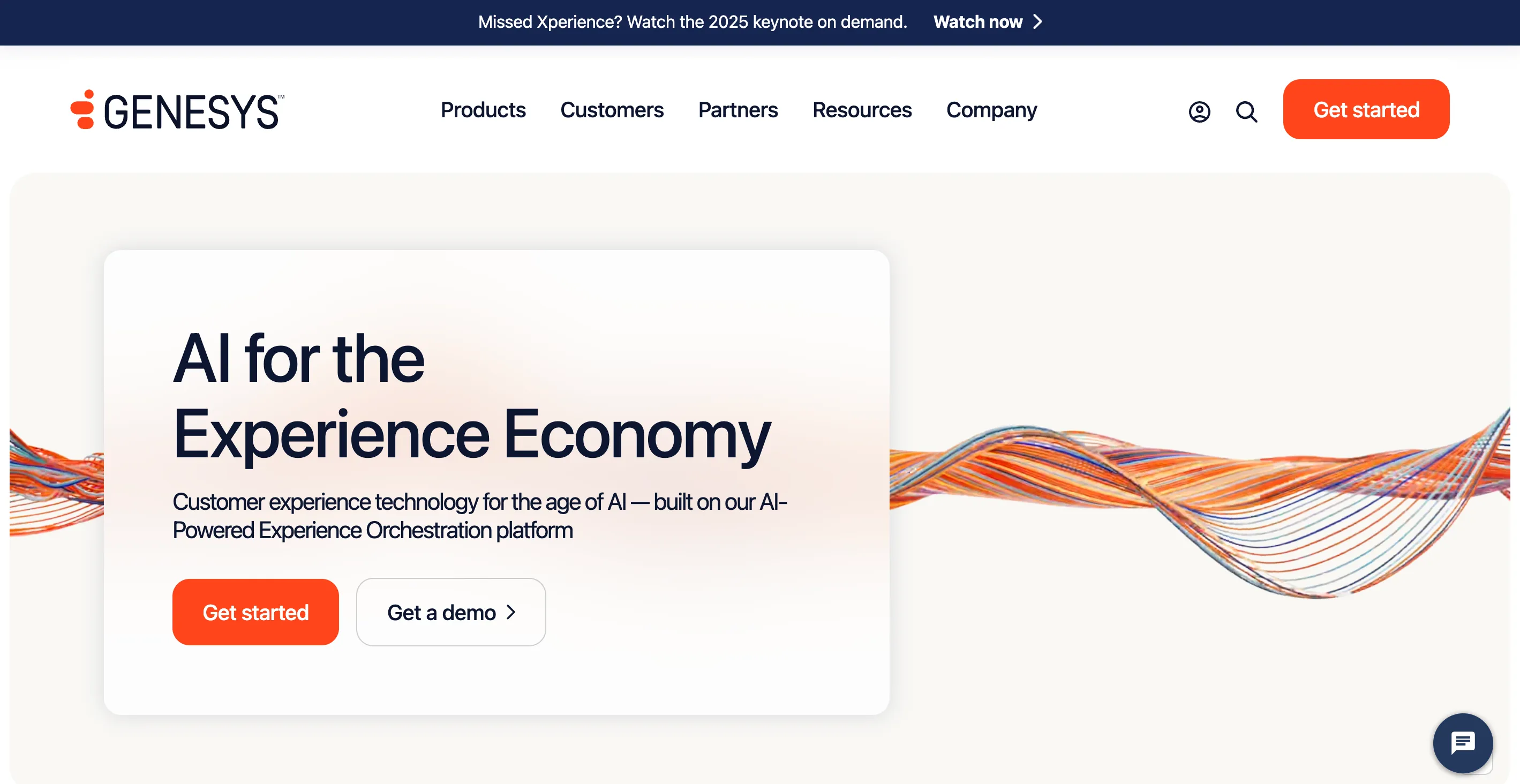
Exceed.ai automates first contact and identifies high-intent leads through conversational AI, triggering routing to human reps when prospects are sales-ready.
Features: Automated initial contact, intelligent lead qualification, conversation management, and seamless handoff to human sales reps based on qualification criteria.
Pros: Strong conversational AI capabilities. Effective lead qualification processes. Smooth transition between AI and human interaction.
Cons: Limited outbound prospecting capabilities. Best suited for inbound lead management rather than complete outbound automation.
Best Fit: Medium-sized sales teams balancing automation and personal touch who need sophisticated inbound lead qualification with human handoff capabilities.
12. Gong.io Conversation Intelligence for SDR Optimization
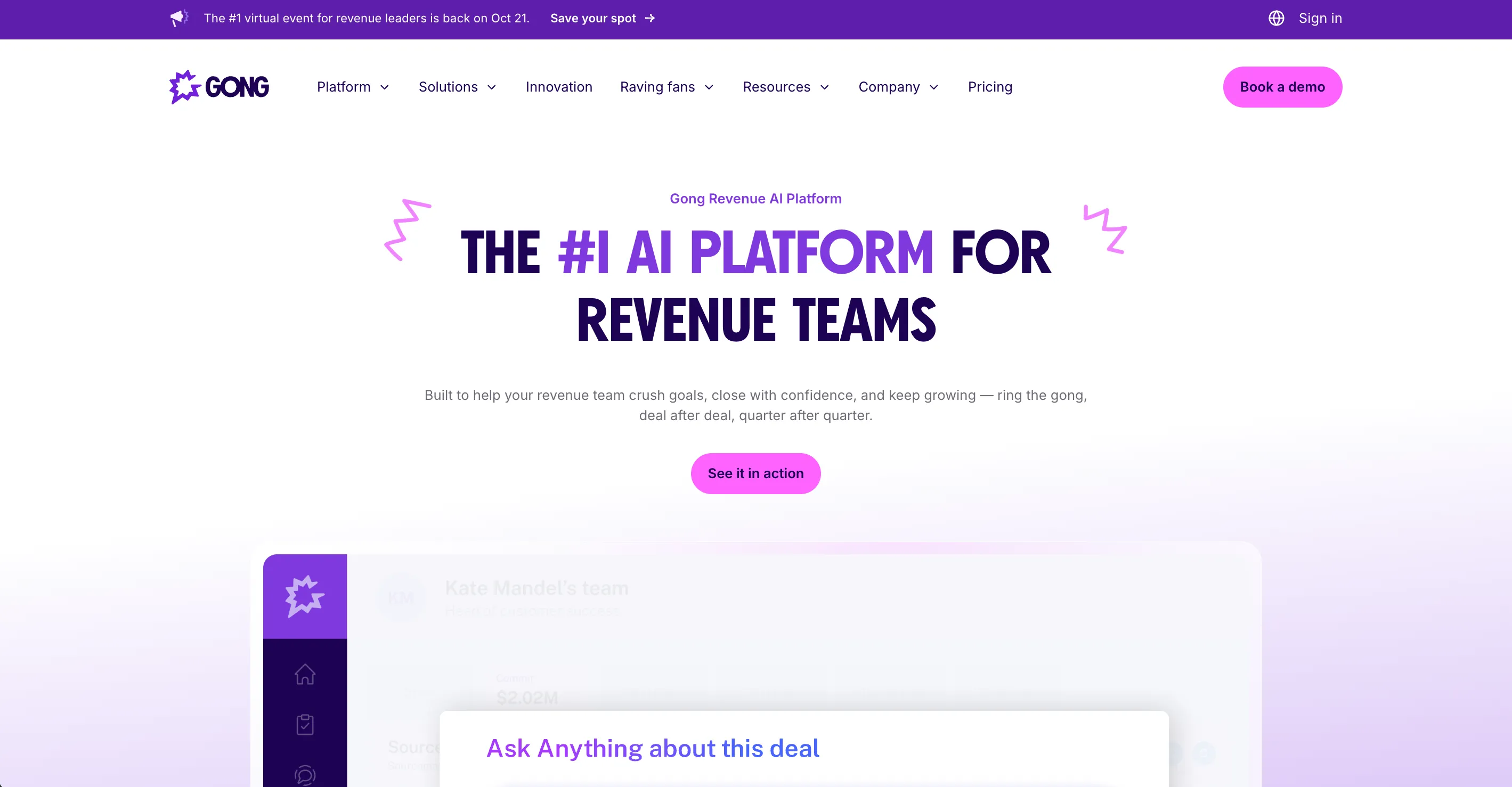
Gong.io captures AI-generated insights from calls and emails to refine sales playbooks and optimize SDR performance through conversation intelligence.
Features: Call and email analysis, AI-generated insights, playbook optimization recommendations, and performance tracking for sales team productivity.
Pros: Advanced conversation intelligence capabilities. Detailed performance analytics. Strong coaching and optimization features.
Cons: Focuses on analysis rather than execution. Requires existing outreach activities to analyze rather than generating new outbound efforts.
Best Fit: Sales leaders tracking SDR productivity and conversion metrics who want detailed analytics and coaching insights to optimize existing processes.
Choosing the Best AI SDR for Your Sales Team
Selecting the right AI SDR requires evaluating key factors that align with your team's specific needs and growth objectives:
Automation depth determines whether you need full autonomy like 11x.ai's Alice or assistive features that enhance human workflows. Tech stack integration ensures seamless connectivity with your existing Salesforce, HubSpot, or other CRM systems. Lead qualification accuracy and personalization capabilities directly impact response rates and meeting quality.
Pricing models vary significantly from per-seat pricing to usage-based systems, affecting your total cost of ownership. Consider whether you need outbound vs inbound automation, as some platforms excel in specific areas while others provide comprehensive coverage.
For teams ready to scale beyond traditional SDR limitations, 11x.ai offers unique value through autonomous operation and 24/7 engagement that grows the pipeline without expanding headcount. Our digital workers handle complete sales motions, from prospecting to qualified handoffs, making it ideal for organizations serious about AI-driven revenue growth.
AI SDRs work alongside AI Sales Assistants and connect with AI CRM Tools like Salesforce and HubSpot to maintain accurate pipeline data and streamline every stage of the sales process.
Frequently Asked Questions
AI SDRs are artificial intelligence-powered sales development representatives that autonomously manage outreach, lead qualification, and follow‑ups. They use machine learning, CRM data, and natural language processing to identify ideal prospects, send personalized messages, and schedule meetings automatically, freeing human sales reps to focus on closing deals.
Yes. Research from Salesforce shows that 83% of sales reps using AI agents for lead generation saw measurable improvement in performance. Teams adopting AI SDRs report faster response times, higher meeting conversion rates, and consistent engagement without the fatigue or inconsistency that affects human reps.
AI can function as a digital Sales Development Representative by automating research, personalization, outreach, and qualification. Tools like 11x.ai demonstrate this through autonomous agents such as Alice and Julian, which manage full outbound and inbound cycles, researching prospects, crafting individualized emails, handling replies, and booking meetings in real time.
The 30% rule refers to the portion of traditional SDR tasks, like writing emails, updating CRMs, or managing follow‑ups, that standard AI automation can handle today. Advanced AI SDRs such as those from 11x.ai surpass this threshold by taking on complete sales sequences autonomously, from lead identification to conversion, without manual intervention.


.avif)
.avif)